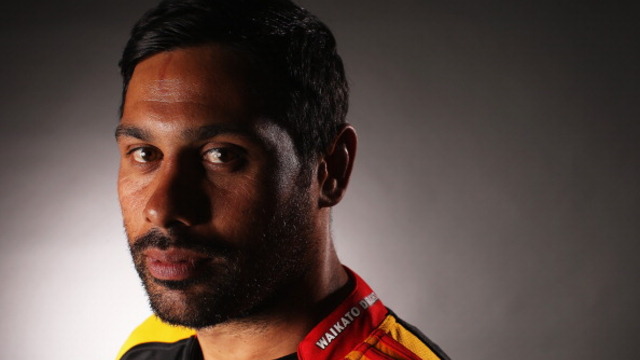The old proverb says that ‘All that glitters is not gold.’ Rugby coaches are often attracted to the more obviously creative parts of the game, like inventing new attacking plays off a first phase scrum or lineout, but true gold is more often unearthed in the mundane aspects like exit strategy.
Fine-tuning your own exit strategy, and pressurizing the exit strategy of the opposition is the most reliable way of creating those positions where you can reap what you’ve sown. Then, you will have truly earned the right to invent the glittery ‘designer’ stuff on attack!
As the World Rugby website comments succinctly:
“Exit strategies vary widely. Some teams rely heavily on the box-kick, and some will have one or two kicking options standing deep to clear their lines.
“Very aggressive teams will look to run the ball clear when they are deep in their own half.
“Teams with conservative game plans might use their exit strategy even when they are at the halfway line.
“However teams contrive it, a great escape always requires a well-coordinated plot and military precision.”
An ever-growing control of the opponent’s exit strategy was one of the most important elements of La Rochelle’s titanic, last-gasp victory over Leinster in the recent European Champions Cup final.
By the end of the game, Stade Rochelais had dominated 60% of territory and possession, enjoyed 12 entries to the opposition 22m ‘red zone’ compared to Leinster’s eight, and kept their tackle count below three figures while forcing the men in blue to make 188 stops. It was a significant achievement against an opponent which is at its most formidable when in possession of the ball for long periods of play.
Leinster’s early ascendancy in the game was based on the powerful left-footed exit kicking of their New Zealand-born wing James Lowe. His first effort was a booming punt from one 22 to the other, which earned Ireland’s champion team a lineout on halfway:
Lowe backed it up with an even more spectacular effort from the lineout, a 60m punt to the corner which gave Leinster the 50/22 lineout turnover and an attacking position right on the La Rochelle goal-line:
A third raking punt in the 8th minute was enough to convince the French that they could no longer allow James Lowe to kick off his left foot towards the left side-line with impunity.
From the half-our mark on, La Rochelle managed Leinster’s exit options far better than they had at the beginning of the game. Their next kick-off was directed straight up the middle, instead of veering into Lowe’s half of the field on the Leinster left:
Lowe has further to go reach either touch-line, and the pressure is coming from his left side via second row Romain Sazy, who is effectively shutting down the left foot-to-left-touch option:
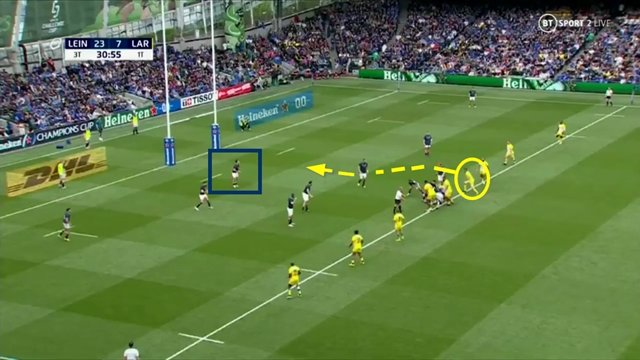
The next kick-off in the 47th minute, deep into Leinster’s right-hand corner, moved the play even further away from James Lowe:
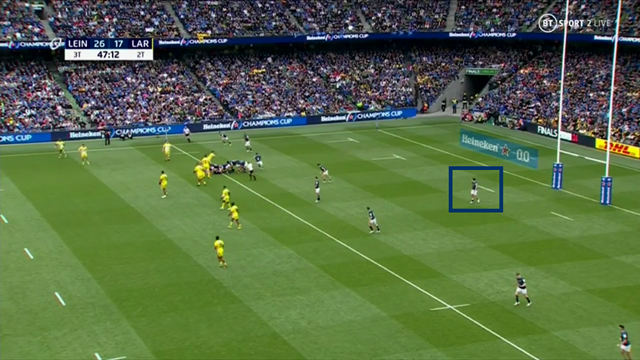
The exit has to come off the boot of Leinster scrum-half Jamison Gibson-Park via the box-kick, and the outcome was a La Rochelle lineout inside the home side’s 22. The ball had been pulled back from a position outside the 22 but the kick went out on the full.
When Lowe did eventually receive the ball again in an exit scenario, the reigning champions did their level best to narrow the target area for his left boot:
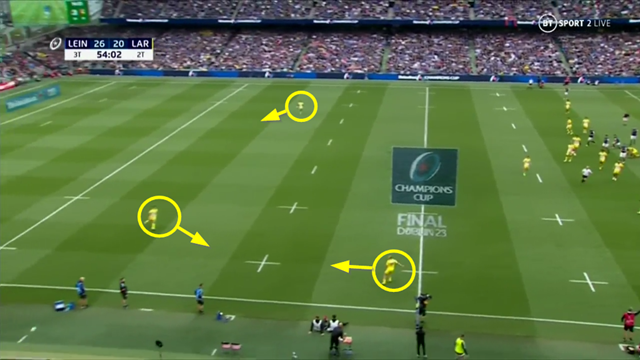
Lowe’s kick has to hit turf before the ball goes out, and the two defenders closest to the landing zone are both looking to get an early jump on the play. Full-back Brice Dulin has ‘cheated’ across to the right early in his backfield rotation, while Springbok right wing Dillon Leyds (also benefiting from extensive experience at number 15) has dropped back from the line to join him before the ball even leaves the hands of the halfback at the base of the ruck. It puts Lowe under too much pressure to find a narrow strip of the green, green grass of home. Play once again reverted to a French lineout throw inside the Leinster 22 when his punt went straight out on the full.
La Rochelle continued to exert pressure whenever they anticipated Lowe kicking off his left foot to the left side-line:
La Rochelle centre Jonathan Danty is running at the outside-left of Lowe’s kicking ‘box’ to ensure that he cannot find any distance off the dominant foot. The angle has to widen to accommodate Danty’s rush and the relieving punt is sliced into touch.
Summary
The glittering aspects of rugby coaching, like clever strike moves on attack, often make the highlight reel and provide the basis for public lauding of a coach’s ability. In general, the true gold of attention to the unglamorous bread-and-butter details of the game pays out a higher dividend. If you can exit smoothly from your own territory, and manage your opponent’s exits to your advantage, you will be sitting pretty and ideally positioned to play the game you want in the right areas of the field.





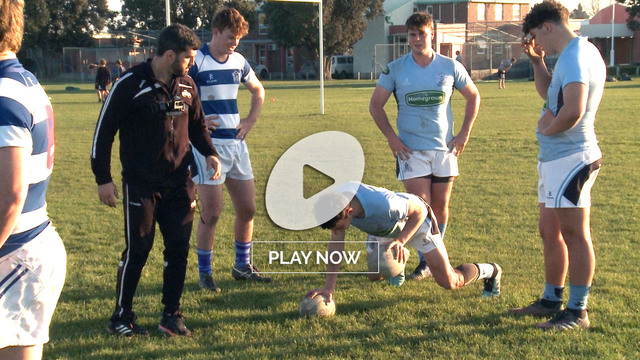
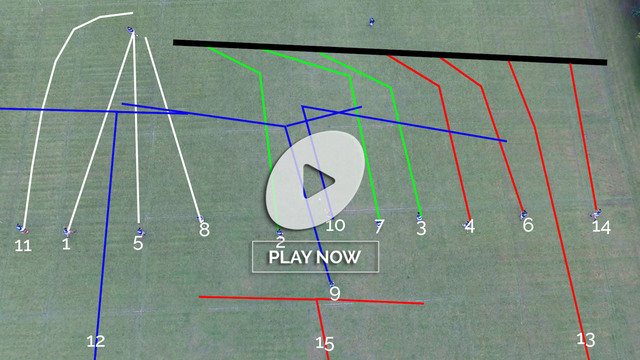

.jpg)
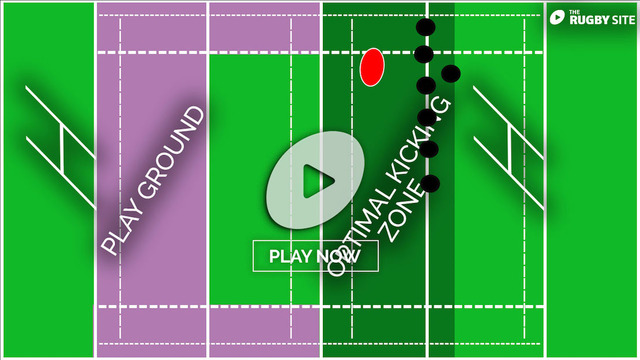
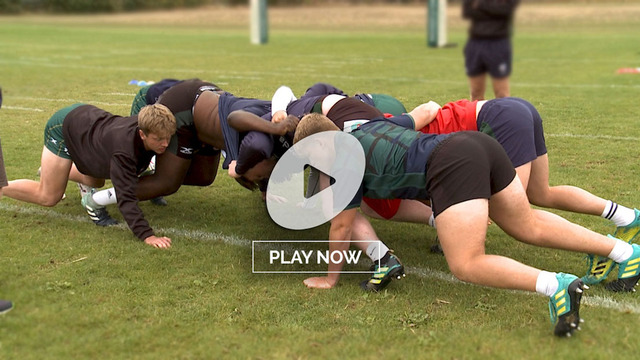
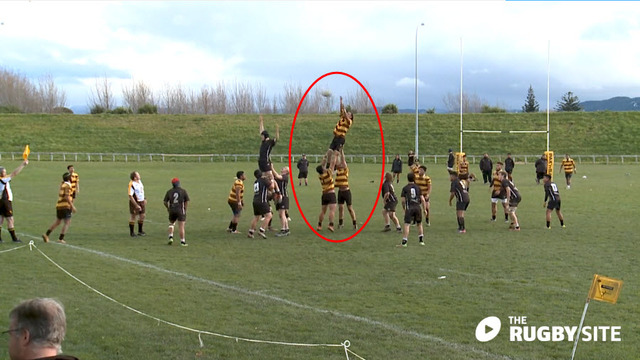
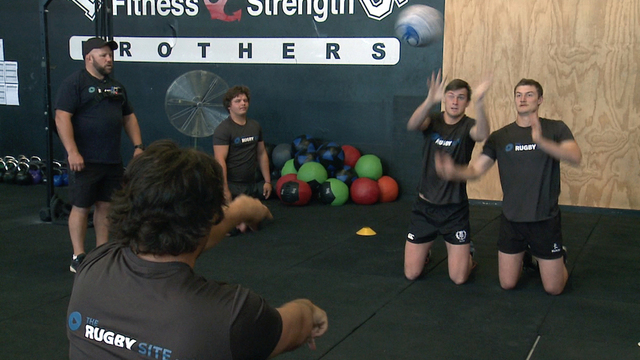
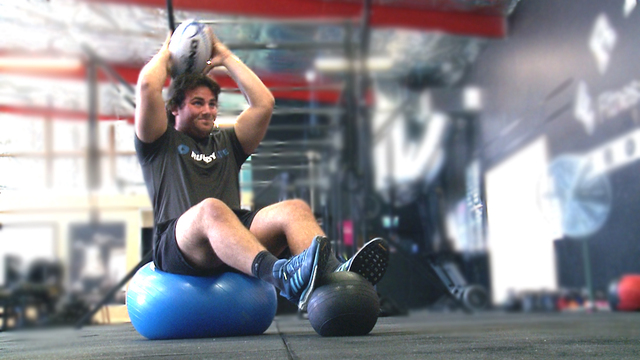
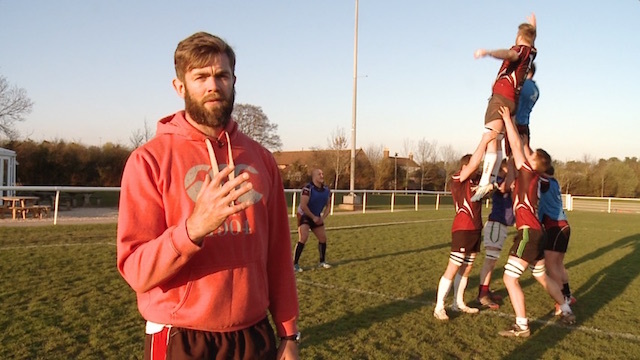
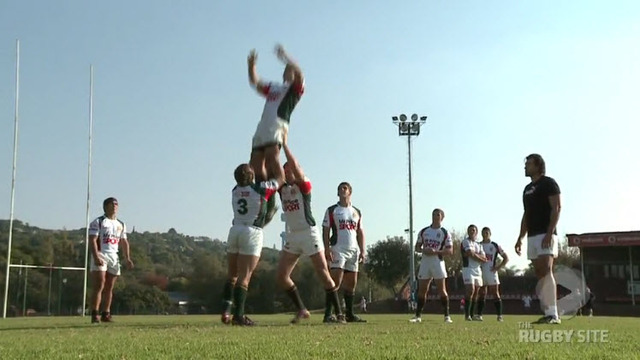
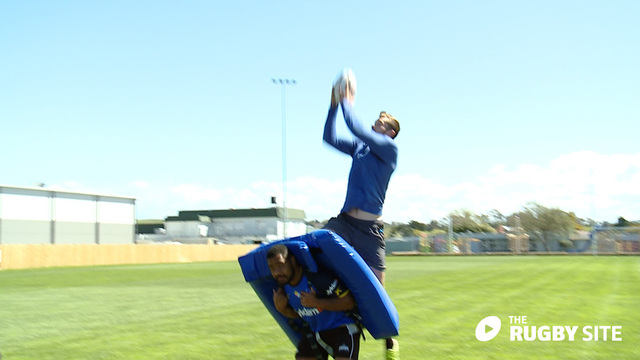
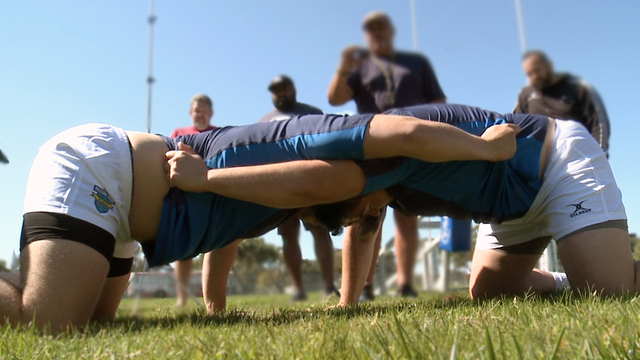
.jpg)
